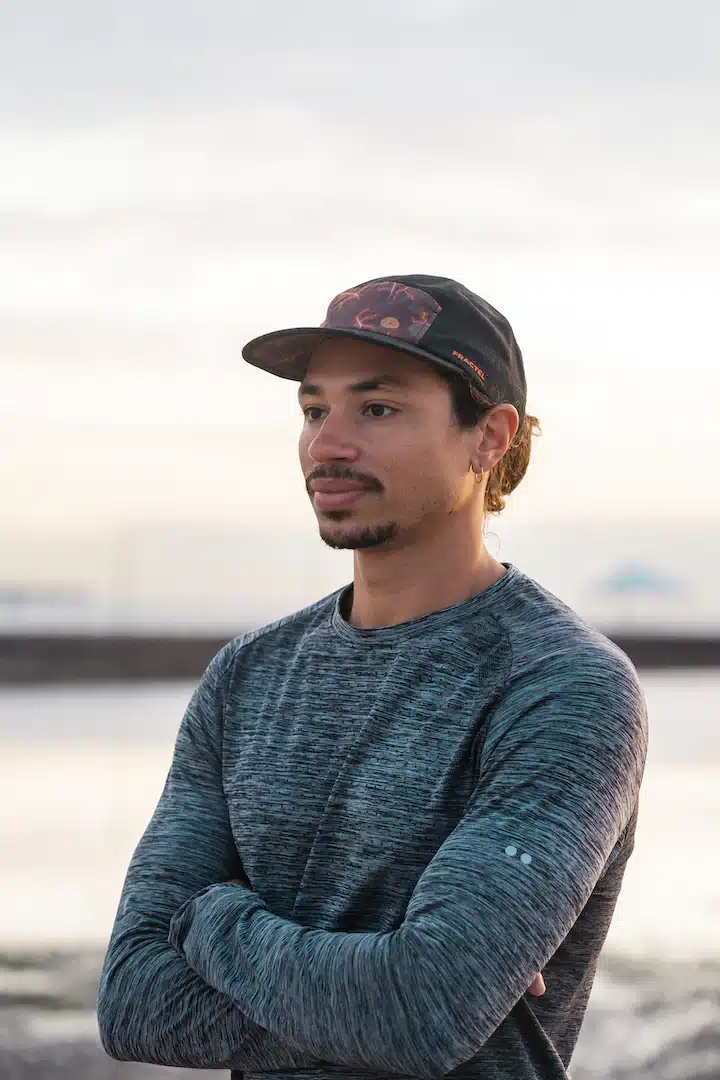Acknowledgement of Country
UniLodge acknowledges and respects Aboriginal and Torres Strait Islander peoples as the First Nations Peoples of this Country.
We value and celebrate cultures, histories and languages that have been created and shared on these lands. We revere First Nations connections to lands, seas and communities and honour traditions as we seek a deeper understanding, harmony, and reconciliation.
Our Vision for Reconciliation
Our vision is to build inclusive communities for inspired living, in which First Nations Peoples are treated with dignity and respect. As a provider of accommodation, UniLodge is uniquely positioned to promote equity and cultural exchange to ensure that our buildings are places where First Nations Peoples feel culturally safe and at home.
MEET OUR ARTIST
Ambrose Scott Killian
Artist Ambrose Scott Killian, proud desert/Eastern Arrernte and Western Bundjalung/ Wahlubul man.
I am a proud father to Amias Angale Killian and Akira Angale Killian and loving husband. I was born on Larrakia country (Darwin) and I am currently residing in Meanjin/ Brisbane on beautiful Quandamooka country to which I now call home and have since 1999.
My Nana, Barbara-Anne Chisholm, was born on Eastern Arrernte country and was stolen and raised north of Darwin on Melville Island before moving to Brisbane and then back to Darwin after her schooling had finished. My Grandfather, Ambrose Morgan was of Bundjalung and African American decent and grew up around Redfern, NSW, so I have family, connections, experiences and stories to share through all of these regions – the rugged desert country of central Australia, freshwater country of Tabalum and Wahlabul area, as well as the saltwater country of Darwin and Bayside Brisbane.
I have always been a day dreamer and drawer, finding myself stuck sketching and drawing from a very young age – it was and always will be my vessel for communicating, connecting to Apmere/country, and translating and sharing stories of myself, my ancestors and the notion of ‘Country’. Art and creating has always been my safe space, letting me share my feelings and stories in a realm that lacks judgement and is only limited to one’s imagination. My drive to learn more about the cultural significance of our art really began in 2010 when I created a large piece titled ‘Grey’.
This piece won the Indigenous Heart Foundation Student Award and toured QLD galleries for the remainder of the year. More importantly, it opened up my passion and drive to keep painting and learning about our art and culture, contacting my elders and being really motivated to learn and share my knowledge with those who take the time to listen.
I enjoy acrylic medium on canvas as well as utilising spray paint, finding myself painting pieces with a prominent foreground image/ subject, or landscape style paintings. I am colour-blind, so choosing the right colour pallet was always a challenge for traditional art and curriculum during my time at school but has been very rewarding when I hear that I’ve ‘nailed the colours’ that I often can hardly see or distinguish.
You will often see me utilising browns, pinks, and neutral tones to represent the desert and the land, whilst working in subtle hints of blue to represent our waterways. I am captivated by our beautiful environment, and specifically the night sky so I find myself painting and creating pieces with silhouettes of people and our animals in some of these landscapes.
My fondest memories are under the star lit night sky when camping in the Territory or with my biological Father in Perth, which you will see strong references to in a lot of my artwork. Our ancestors did not have books, giant relics and buildings to teach our culture and lore, so I feel it is my duty and responsibility to teach and expose people to
our culture through my artwork and stories.
These have been handed down to me and help me acknowledge my roots from when our mob were moved to the small township / community Papunya, and link to when the contemporary First Nations Art movements began as we now know it.



About the artwork
This artwork represents and symbolises the many communities and worldly experiences that make up the UniLodge family – from team members through to residents living at UniLodge locations. It was important to convey messages of belonging, multiculturalism, and community to represent the many different people
and cultures that pass through and contribute to UniLodge’s diverse community.
The artwork features many community circles, all revolving around a central meeting place – UniLodge. The diversity of people is represented by the many colours, shapes and sizes of the circles surrounding the central circle. Whilst they are all different, they each overlap or adjoin each other, symbolising their connection.
Through the artwork there are also features of waterholes and desert country which have been layered underneath the dotwork. This lower layer represents the many vast landscapes that UniLodge and its team members and residents are from and connected to. It also pays respect to the beginning of the modern, Western Desert art movement that began the use of ‘dotwork’ through First Nations artwork in the 70’s.



